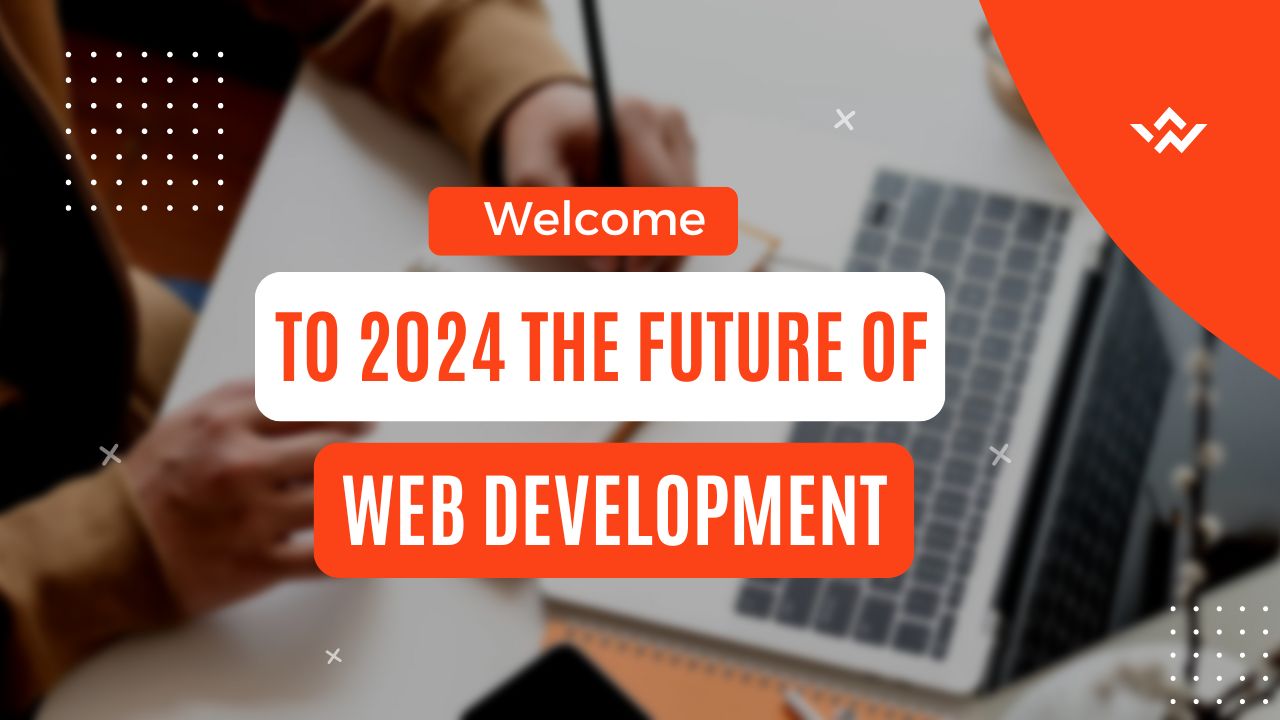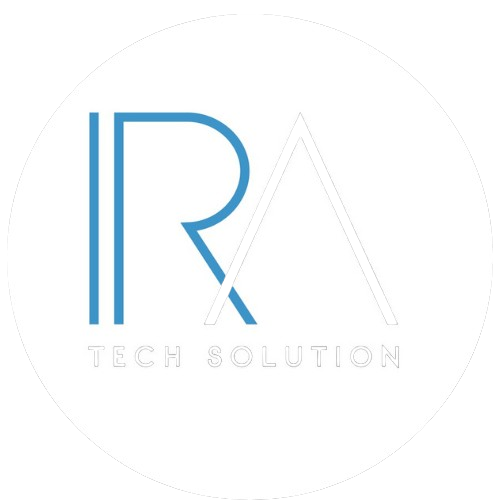
Moving on to, or even as we enter 2024, we see web development at its highest rate of change. Recent advancements in AI, the low code platform, and 5G have transformed ways of developing websites. Trends like dark mode, sustainability, and AR also transform how users interact with websites.
From automating the work that used to be coded to enabling voice search and improving cybersecurity, the future of web development is focused on developing websites and applications that are faster, smarter, and more with an emphasis on users. Therefore, These changes should be widely accepted mainly because today’s world is considered highly competitive, especially in the fast-growing technological environment.
AI-Powered Web Development and Automation
AI is now implemented in various fields worldwide, and web development cannot be an exception. Artificial intelligence has an extended influence on the developers’ tools used in creating, improving, and managing websites to make them more automated, personalised, and efficient for usage.Revolutionizing Code with AI Tools
New ways of coding are emerging with the help of AI: such major coding tasks are automated, and new expanded templates are created, which saves developers so much time. Regarding artificial intelligence tools, now the existence of code generators or copilot services like GitHub Copilot that work as handy tools to propose lines of code or even entire functions that may be useful within the context of a developer’s project. These tools are trained on large amounts of data, meaning that they can give optimistic results, reduce the number of mistakes, and increase the level of effectiveness. In addition, AI makes smart debugging possible since it is capable of detecting problems as they are ongoing, thus allowing the developer to be more creative in web development. These AI tools can even forecast coding mistakes using machine learning algorithms; hence, web development is less likely to make mistakes.AI for Personalized User Experiences
Semantic web and AI are important to delivering personalisation, which, in turn, enhances user interaction with the application. Here, AI can suggest which content, the arrangement of the content and the navigational tools and bars will be more satisfactory to the user. AI algorithms can follow how users have engaged their content and products in the past; this interaction, choice, and demography make it possible for firms to personalise in real-time. They have also become valuable when proactively offering client responses through faithful AI-based chatbots and digital assistants. Some of the use cases of these AI-based tools are to answer user queries naturally, thus minimising the need for the user to interact with any non-voice-based interface.Low-Code/No-Code Development
The need for web applications is rapidly increasing, and with increased use of code-no-code solutions, people with minimal coding experience can now develop applications. Such platforms reduce the development complexities that any business needs to tackle to develop appropriate solutions, making it easier and cheaper to develop applications.Empowering non-developers to Create
With the help of low-code/no-code tools, people without IT skills can build web applications and sites using the simplest tools, such as drag-n-drop and templates. That is why web development is becoming more democratised, allowing small businesses, entrepreneurs and start-ups to develop digital products without involving a full-blown development team. For instance, Web Flow and Bubble enable conventional customers or users to develop websites without coding. These tools do not require the users to code since they make the process much less cumbersome when working on projects concerning graphics and functionality.Increasing Efficiency for Developers
No matter whether it supports people with no coding experience, low-code/no-code tools also improve developers’ efficiency. These platforms help reduce such repetitive coding chores so that developers can apply their efforts to higher creative elements of the project. Using these tools, developers can create a prototype, create an MVP, and deploy websites with less time, shortening the entire development process.Progressive Web Apps (PWAs) Gain More Traction
PWAs are rapidly appearing owing to the opportunity that the application empowers users to obtain the working of an application appearing within a web browser. PWAs are supposed to be quick to work, stable, and user-friendly, irrespective of the device used.Blurring the Lines Between Web and Native Apps
PWAs overlay web and native mobile apps’ characteristics, including offline access, push notifications and home screen application shortcuts. While they use web technologies, including HTML, CSS and JavaScript, in their development, PWA applications work like traditional native apps and do not require downloads from the App Store or Google Play. With more time spent on their mobile devices, PWAs are emerging as a perfect fit as organisations demand affordable ways to cater to users who access their services on mobile devices without creating new, separate native applications.3.2. Improved SEO and Engagement with PWAs
Another benefit of developing PWAs is enhancing SEO ranking and user interaction. As a result, PWAs are available through URLs on the World Wide Web and can be indexed to increase websites’ visibility and search engine results page rankings. The overall optimisation of these sites makes it easy for them to load faster and have a better flow, leading to high engagement and low bounce rates.Voice Search Optimisation
As speaking to devices at home becomes more prevalent, optimising web content for voice is more critical. Voice search is revolutionising how consumers engage with search engines, and web firms cannot afford to ignore this trend.Preparing for the Voice Search Revolution
With the increasing use of mobile devices such as iPhones, Amazon Echo, Google Home, and Microsoft’s Cortana, any web developer should consider voice search optimisation. Voice queries are also longer and more conversational than text search queries, meaning the keyword concept is no longer valid.Structured Data and Voice-Friendly Content
For websites to be ready for voice search, the developers should focus on structured data and include direct answers to some of the most asked questions. Marking up schemas and optimising content for featured snippets make it easy to be picked for voice search. Secondly, developing content that responds to users’ average inquiries in a simple question/answer style is one of the best strategies for VOS.Dark Mode Standardisation
One more feature available today is the switch between dark and light themes within applications and websites. This trend is great for increasing the device’s beauty while providing more comfortable use, particularly when reading content in the dark.Enhancing User Comfort with Dark Mode
Dark mode is more comfortable on the eyes, particularly on devices used at night, which is why it’s popular among users. As web developers, we must cater to users’ needs by providing them with the option. Also, it reduces the battery consumption on OLED and AMOLED screens, making operating mobile devices even more enjoyable.Technical Considerations for Implementing Dark Mode
Enabling dark mode is thus in the breaks of good design and development. Dark mode UI designers must ensure that color, contrast ratio, and text readability are good both in the dark and standard modes. These changes, which can be done easily using CSS and media query, make the changes to themes smooth while keeping the site accessible.Sustainability and Green Hosting
This is because people are becoming conscious of the dangers they pose to the environment, thus creating the need for sustainable web development among businesses. Today, green hosting and the ecological aspect of web design are becoming mandatory for those wishing to minimise the carbon footprint culture.The Push Towards Eco-Friendly Web Design
Green web design entails designing websites to consume less energy by reducing the consumption of other resources and minimising the occupied spaces and file sizes. Reducing the weight of websites creates prerequisites for saving energy needed for page loading, decreasing the ecological pressure originating from web traffic.How to Make Your Website More Sustainable?
Developers can use several approaches to ensure sustainability when operating their websites. These include Choosing a green hosting service provider that uses green energy, missing up images, avoiding the use of huge JavaScript and limiting the number of requests made to the server. Moreover, selecting the appropriate CDN providers and improving server scripts can reduce energy and carbon dioxide expenses.Enhanced Cybersecurity in Web Development
Today, the threats have turned to the cyber world, so developing strong cybersecurity while developing websites is important. Vulnerability, such as data leakage, hacking, or privacy issues, emerged as significant threats to developers that need to step up and safeguard people’s interests.Prioritising User Privacy and Data Protection
In this case, web developers’ concerns with user privacy should involve using the best encryption standards, proper storage for users’ data, and clear policies on privacy. Data security laws such as the GDPR have prioritised cybersecurity for businesses, which is why it’s central to web development.Future-Proofing Your Site Against Cyber Threats
To protect against new and more complex cyber threats, website developers must abide by best practices and standards such as SSL, MFA, and Real-Time Protection. With the ever-growing threat of cyber criminals and hackers, frequent security assessments, product upgrades, and security improvement scans are critical for a website’s security.5G Technology and Accelerated Web Performance
To safeguard their product, developers must be ready to effectively utilise the opportunities of 5G to provide superior performance and interactivity.Leveraging 5G for Faster Web Experiences
Generally, thanks to 5G, it only takes several milliseconds for a website to load, which provides its users with a perfect browsing experience. For web developers, 5G opens up the prospect of creating better-designed websites with improved bandwidth and lower latency, which previously were unreachable due to slow networks.Preparing Your Site for 5G Adoption.
To get ready for 5G, every web developer should work on that web page’s mobile performance to maximise the ability when 5G is now here using improved speed and increased data transfer. As 5G becomes the new norm, media will need to be optimised, server requests will be diminished, and page load times will need to be kept to a minimum.Augmented Reality (AR) and Virtual Reality (VR) Integration
Two forms of interactive technologies – augmented reality and virtual reality – are no longer just confined to games; they also integrate into the main elements of web design and development.Enhancing User Engagement with AR/VR
Recognising this potential, AR and VR technologies can be used to improve user engagement, providing the possibility of interactive and immersive environments. New opportunities to interact – AR and VR – expand the site’s capabilities by allowing activities like trying on products without buying or taking a virtual tour around a house.Challenges and Best Practices for AR/VR Integration
As exciting as AR and VR present themselves, implementing them in websites poses some complications. Compatibility issues with different devices, fast access, and focus on interaction are arguably the most critical aspects of augmented and virtual reality implementations.Conclusion:
Web development is one field that has seen an even faster pace of shifting technologies and constantly changing customer needs and demands in the upcoming future. Next-generation web development is influenced by artificial intelligence, low code/ no code tools, PWAs, voice search, dark mode, sustainability, cybersecurity 5G, and AR/ VR. In 2024 and as science advances, keen business people and developers will keep up with such trends and create the best web in the market.Recent Posts
Welcome to 2024: The Future of Web Development
October 7, 2024
Academic Writing Services Benefits
August 31, 2024





